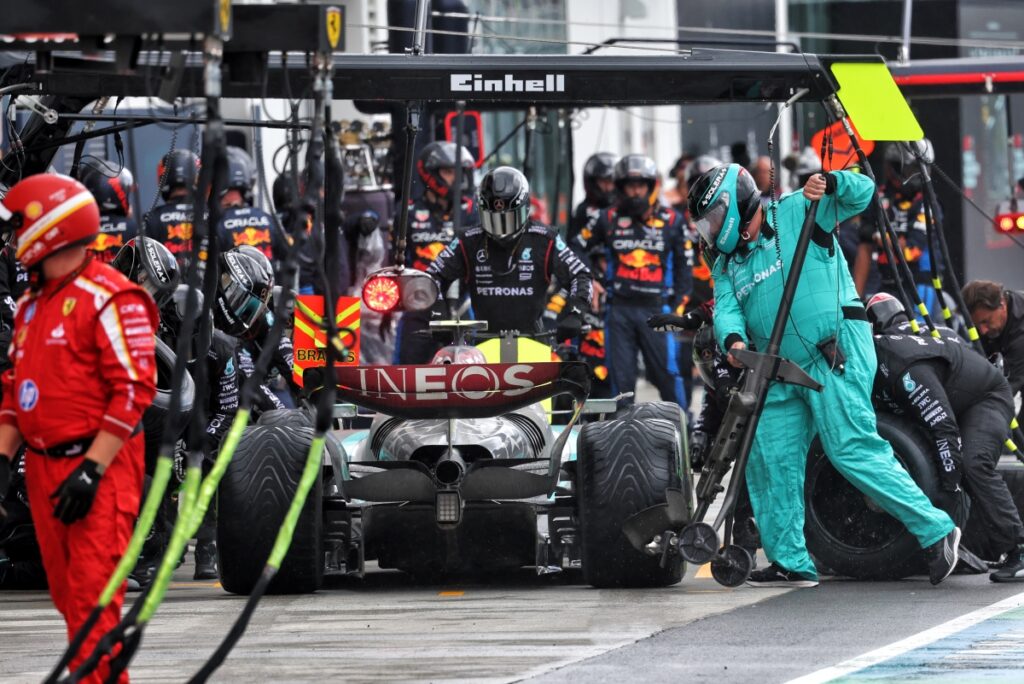Mercedes Explains Split Strategy in Canadian Grand Prix Due to Graining Concerns and Tyre Availability
Formula 1’s Canadian Grand Prix saw Mercedes split its strategy twice, a decision prompted by concerns over graining and the available tyres. The team’s Technical Director, James Allison, has shed light on the thought process behind this move, which came during a thrilling mixed conditions race at the Circuit Gilles Villeneuve.
With George Russell contending for the win from pole position, Mercedes opted to put him on the Hard compound tyre, while Lewis Hamilton behind was fitted with the Medium. This contrasting approach was a result of the restricted dry running throughout practice due to intermittent showers, creating an unclear picture.
As Allison explained in the team’s Canadian GP review video, graining became an evident issue in Montreal, leading Mercedes to think the most durable rubber would be Russell’s best chance to win. “The Hard tyre is more resistant to graining, maybe a little slower, but more resistant to graining. We fitted George with the Hard tyre as a hedge against the graining,” Allison said.
The team’s decision to fit Russell with the Hard tyre was also influenced by the likelihood of the Medium tyre graining, which would have left him at a significant advantage. Meanwhile, Hamilton was given the Medium tyre, effectively spreading the team’s bets.
“When the track gradually dried up and went to wet, we did not put Lewis on the Hard tyre. We put him on the Medium tyre,” Allison explained.
However, a second Safety Car on Lap 54 would ultimately scupper Mercedes’ plan. The team took the opportunity to move both cars onto new slick rubber for the closing stages, with Russell switching to the Mediums and Hamilton going onto the Hard. This proved decisive, as Russell passed his teammate to claim the last podium place.
Allison acknowledged that the respective allocations the pair had remaining led Hamilton to be placed at a disadvantage in comparison to Russell in the final stint. Despite Hamilton’s disadvantage, Allison believes the team made the correct decision in switching him to the Hard tyre, given the circumstances.
“Those ahead of him, other than his teammate, would be on used rubber, and it is not a question whether a brand new Hard would be quicker than a 12, 13 lap old Medium,” Allison said.
In conclusion, Mercedes’ split strategy in the Canadian Grand Prix was a calculated move aimed at mitigating the risks of graining and leveraging the available tyre options. While the outcome was not exactly as planned, the team’s approach demonstrated a deep understanding of the complex tyre dynamics in Formula 1 today.
🔗 Source
